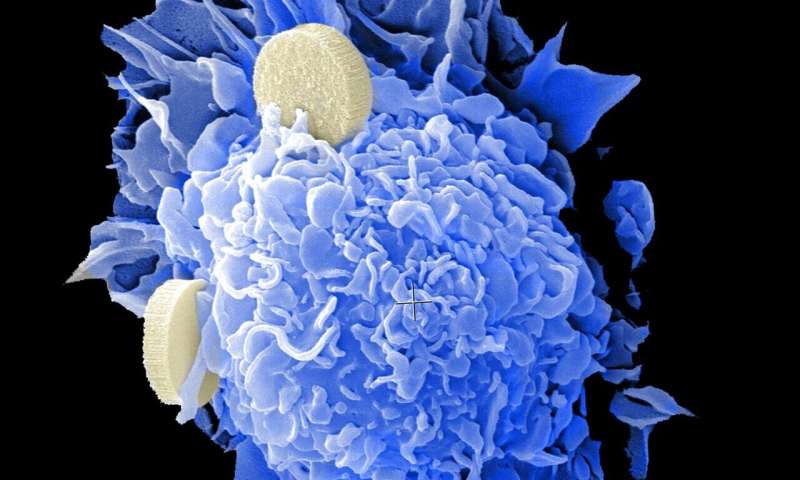
Investigators at Weill Cornell Medicine have identified significant differences in the molecular characteristics of tumors from younger and older cancer patients across several cancer types.
Their research, published Dec. 7 in Cell Reports, suggests that cancer treatment could potentially be tailored by age. The study also identified pre-existing drugs that could target mutations predominantly found in younger cancer patients—promising candidates for future clinical research.
“Our study is the first to investigate distinct age-related differences in tumor characteristics across a broad range of cancers,” said senior author Dr. Olivier Elemento, director of the Caryl and Israel Englander Institute for Precision Medicine and professor of physiology and biophysics and of computational genomics in computational biomedicine at Weill Cornell Medicine. “The findings demonstrate that we should think about younger and older patients as having different diseases and therefore, treat them differently.”
Typically, studies of age-related differences in molecular characteristics of cancers have been conducted in one tumor type at a time, such as breast cancer, said co-first author Yajas Shah, a doctoral candidate in the Weill Cornell Graduate School of Medical Sciences working in Dr. Elemento’s lab at Weill Cornell Medicine.
There is a strong association between aging and developing cancer. Recently, there has also been a rise in the incidence of cancer among young adults. Current estimates show that one in 29 males and one in 17 females under the age of 49 are likely to develop cancer. The most common cancers in these patients are breast, colorectal, genital tract, skin, connective tissue and thyroid cancers.
“The insight that younger patients usually survive longer than older patients with the same cancer types inspired us to investigate age-related genetic differences in tumors,” said co-first author Dr. Akanksha Verma, formerly a doctoral student in the Tri-Institutional Program in Computational Biology and Medicine and working in Dr. Elemento’s lab at Weill Cornell Medicine.
For their study, the investigators examined differences in tumor types by age using The Cancer Genome Atlas, a large databank of genomic and gene expression data of primary cancer tumors and matched healthy tissue samples across 33 cancer types. They identified 16 cancer types with significant differences in overall survival between younger and older patients. Next, they narrowed the list to six with the most marked differences in gene expression between younger and older patients: breast, uterine, ovarian, thyroid and lung cancers and gliomas, a type of brain cancer. Age ranges for younger and older patients varied by tumor type, with the younger group defined as the youngest 25 percent and the oldest defined as the oldest 25 percent for each cancer type.
The researchers found that tumors from younger patients showed advanced signs of aging. For example, they discovered younger patients’ tumors had biological ages older than the chronological age of matched non-cancerous tissue as measured by tags, called DNA methylation marks. These marks alter gene expression and vary with age. In addition, tumors from younger patients also contained a higher number of cells that have stopped dividing but have not died, known as senescent cells, compared with tumors from older patients. Senescent cells are associated with aging and inflammation, and may play a role in cancer development.
Compared with tumors from older patients, younger patients’ tumors also had more mutations associated with aggressive disease and contained more infiltrating immune cells, suggesting that younger patients mount more robust immune responses to more lethal cancers.
Next, the researchers performed a drug survey using the Drug-Gene Interaction database to identify therapies that may better address the most frequent gene mutations observed in younger patients’ tumors and found several promising matches. For example, the PARP inhibitors olaparib and rucaparib, the mechanistic target of rapamycin (mTOR) inhibitor everolimus, the JAK2 inhibitor ruxolitinib and the PD-1 immune checkpoint inhibitor pembrolizumab might be good candidates for targeted therapies for uterine cancer in younger patients.
Source: Read Full Article
